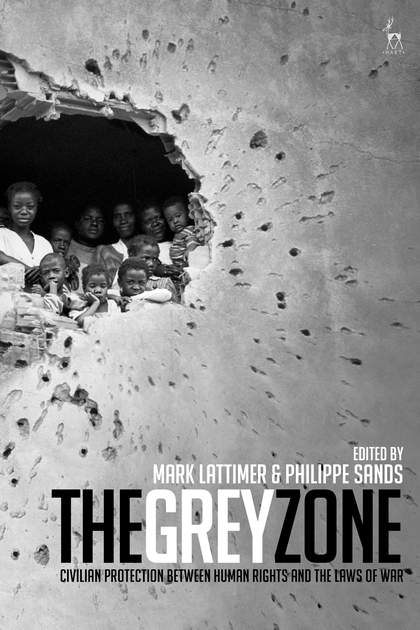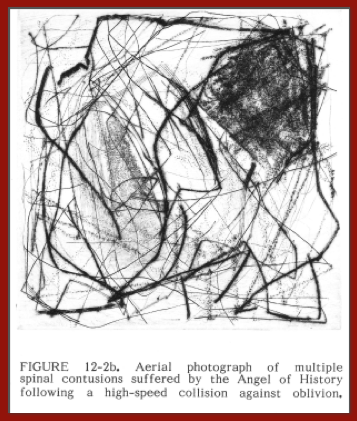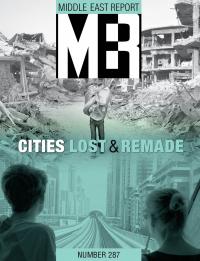 New from Bloomsbury – though, desperately sadly, at a ruinous price, a collection of essays edited by Mark Lattimer and Philippe Sands, The Grey Zone: The Grey Zone
New from Bloomsbury – though, desperately sadly, at a ruinous price, a collection of essays edited by Mark Lattimer and Philippe Sands, The Grey Zone: The Grey Zone
Civilian Protection Between Human Rights and the Laws of War:
The high civilian death toll in modern, protracted conflicts such as those in Syria or Iraq indicate the limits of international law in offering protections to civilians at risk. A recent conference of states convened by the International Committee of the Red Cross referred to ‘an institutional vacuum in the area of international humanitarian law implementation’. Yet both international humanitarian law and the law of human rights establish a series of rights intended to protect civilians. But which law or laws apply in a particular situation, and what are the obstacles to their implementation? How can the law offer greater protections to civilians caught up in new methods of warfare, such as drone strikes, or targeted by new forms of military organisation, such as transnational armed groups? Can the implementation gap be filled by the growing use of human rights courts to remedy violations of the laws of armed conflict, or are new instruments or mechanisms of civilian legal protection needed?
This volume brings together contributions from leading academic authorities and legal practitioners on the situation of civilians in the grey zone between human rights and the laws of war. The chapters in Part 1 address key contested or boundary issues in defining the rights of civilians or non-combatants in today’s conflicts. Those in Part 2 examine remedies and current mechanisms for redress both at the international and national level, and those in Part 3 assess prospects for the development of new mechanisms for addressing violations. As military intervention to protect civilians remains contested, this volume looks at the potential for developing alternative approaches to the protection of civilians and their rights.
I’ve written about attempts to ‘eliminate the grey zone’ before, but this is a different one, as the Contents make clear:
Part I: Rights
1. Who Is a Civilian? Membership of Opposition Groups and Direct Participation in Hostilities
Emily Crawford
2. The Duty in International Law to Investigate Civilian Deaths in Armed Conflict
Mark Lattimer
3. Protection by Process: Implementing the Principle of Proportionality in Contemporary Armed Conflicts
Amichai Cohen
4. Regulating Armed Drones and Other Emerging Weapons Technologies
Stuart Casey-Maslen
5. The Globalisation of Non-International Armed Conflicts
Pavle Kilibarda and Gloria Gaggioli
6. Administrative Detention in Non-International Armed Conflicts
Françoise J Hampson
7. The Crime of Rape in Military and Civilian Jurisdictions
Lois Moore and Christine ChinkinPart II: Remedies
8. The Right to Reparation for Victims of Armed Conflict
Carla Ferstman
9. Arguing International Humanitarian Law Standards in National Courts-A Spectrum of Expectations
Sharon Weill
10. The Death of Lex Specialis? Regional Human Rights Mechanisms and the Protection of Civilians in Armed Conflict
Bill Bowring
11. Extraterritorial Obligations under Human Rights Law
Cedric Ryngaert
12. What Duties Do Peacekeepers Owe Civilians? Lessons from the NuhanovicCase
Liesbeth Zegveld
13. Civilian Protection and the Arms Trade Treaty
Blinne Ní GhrálaighPart III: Developments
14. A Path Towards Greater Respect for International Humanitarian Law
Valentin Zellweger and François Voeffray
15. The Responsibility to Protect and Non-State Armed Groups
Jennifer M Welsh
16. Protecting Civilians by Criminalising the Most Serious Forms of the Illegal Use of Force: Activating the International Criminal Court’s Jurisdiction over the Crime of Aggression
Carrie McDougall
17. Elements and Innovations in a New Global Treaty on Crimes Against Humanity
Leila Nadya Sadat
Mark introduces the project (and en passant makes clear its relevance to my continuing work on Syria) over at Justice in Conflict here:
As armed conflicts continue to metastasize in many world regions, is the existing international law protecting civilians fit for purpose, or are there gaps in protection? The answer of most lawyers of armed conflict to this question has long been that the gap lies not in the substantive law but in its implementation.
While the need for implementation is plain, it is also clear that the contemporary face of conflict presents aspects which the framers of the Geneva Conventions and their 1977 Protocols – as well as the major human rights treaties – could hardly have envisaged. The growth of transnational armed groups such as Al-Qaeda and ISIS means that a ‘non-international armed conflict’ can now be fought in many states simultaneously or even, according to some proponents, globally. New technologies in warfare, from armed drones to autonomous weapons systems, radically alter the circumstances under which information is made available to commanders and with it the scope and accountability of decision-making….
Just looking at the fundamental conflict activities of killing and detaining, the grey areas appear to be wide. With conflict conducted in areas of high population density, there are a number of practical problems in distinguishing civilians from combatants or fighters, but also legal ones. Civilians lose their immunity from attack when directly participating in hostilities, but how is direct participation defined and how long does it last? In Iraq and Syria individuals have been targeted on account of their membership of ISIS or Jabhat al Nusra. But what of members of armed groups who do not engage in combat? What of the driver, the cook, or the recruiter? The treatment of ISIS members and their families is a sensitive subject in Iraq, but it appears to encompass the targeting and/or punishment of those who had no combat function.
The growth in armed conflict jurisprudence from human rights and monitoring bodies has in many cases recast the headline question: rather than identifying gaps in the law, the challenge is to determine which set of laws or legal regimes apply. Should it be human rights law or the international humanitarian law (IHL) applicable in armed conflict? Or indeed both?








